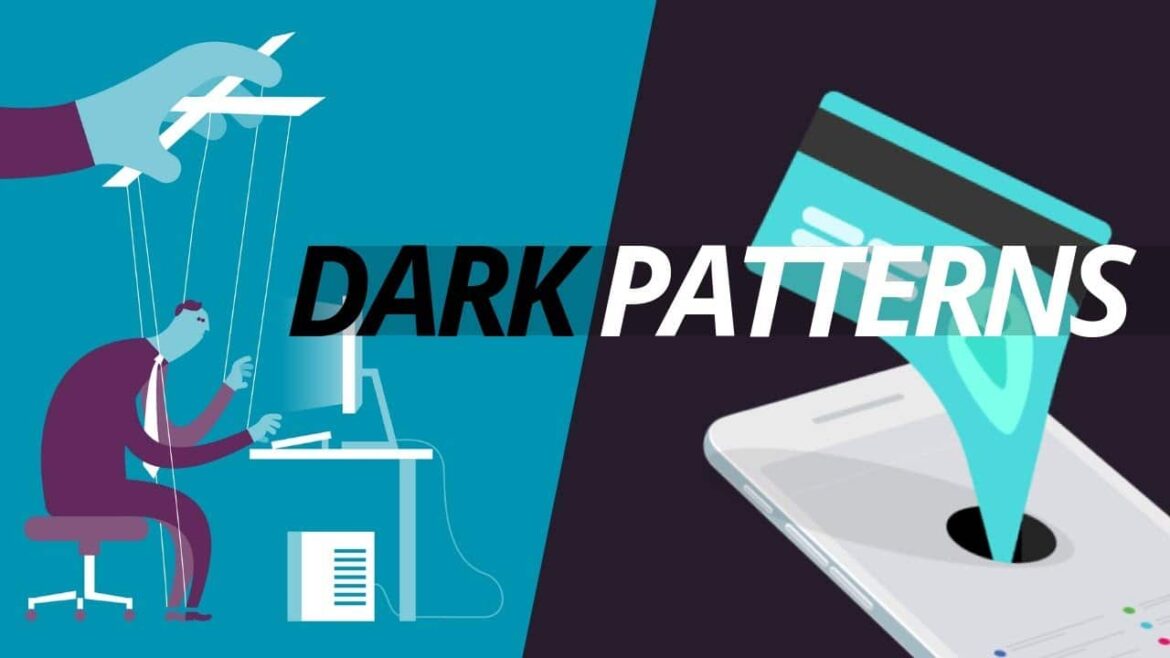Dark patterns are manipulative design methods that trick users into performing unwanted actions in apps and on websites. Dark patterns are often used to make a profit or obtain data.
What are dark patterns?
Dark patterns are manipulative designs intended to persuade users of a website or app to perform a specific action. This helps the provider achieve their business goals and profit from personal data. The term “dark pattern” was coined in 2010 by web designer Harry Brignull to draw attention to these problematic practices. There is no uniform legal regulation for dark patterns, which is why decisions are often made on a case-by-case basis.
- Dark patterns are deceptive strategies in web design that aim to persuade users to take actions that are not in their best interest. These patterns can take the form of hidden costs, difficult unsubscribe mechanisms, or misleading buttons.
- However, manipulative design is problematic because it undermines user trust in digital platforms and leads to a negative user experience. Users feel cheated or manipulated, which leads to a loss of customer loyalty. In the long term, this can damage a company’s reputation and lead to legal consequences, especially if the dark patterns violate consumer protection laws.
- Dark patterns are often used to increase sales or collect user data, which raises ethical concerns about consumer rights. However, there is no uniform law that dictates whether dark patterns are acceptable, a gray area, or even illegal. Therefore, decisions are usually made on a case-by-case basis.
- Furthermore, dark patterns do not present information neutrally or make it difficult to find. In most cases, the manipulation strategies are based on learned behaviors and habits.
Dark patterns: Types and examples
There are different types of dark patterns. Probably the best-known example is the cookie notice on websites, which we often accept unintentionally. This happens because of colored buttons. Ambiguous wording, product scarcity, and hidden advertising are also forms of dark patterns. There are numerous types of dark patterns on the internet. You should be aware of some of the most common ones.
- Roach Motel (Obstruction): This is when users easily find themselves in a situation that is difficult to get out of. An example is a subscription that is difficult to cancel.
- Privacy Zuckering: This method is designed to trick users into revealing more personal data than they actually want to. The term was used as a criticism of Mark Zuckerberg.
- Bait and Switch: This dark pattern can be translated as “lure and switch.” Users perform an action, but in reality, a different, unexpected action is performed.
- Confirmshaming: This involves putting pressure on the user. Feelings of guilt are used to push the user toward certain decisions. If, for example, a subscription is not taken out, the user is told that they may be missing out on a cost advantage.
- Trick Questions: Trick questions are designed to prevent the user from fully understanding a question and thus answer it differently than intended. Complicated, double negatives or unusual wording are often used, for example. This leads to people clicking on something more quickly that they may not have wanted to. For example, you may actually want to unsubscribe from a newsletter, but you end up agreeing to it unintentionally.
How to avoid dark patterns
Back in 2020, the European Commission announced in its Consumer Agenda that it would step up its efforts to protect consumer rights, including measures against dark patterns. To avoid dark patterns, it is worth taking a few precautions.
- Do not click on buttons hastily. Especially with pop-ups, you should take a close look at what options are available.
- Checkboxes should also be checked carefully. Especially with forms, it is important to pay attention to the wording of texts and to really understand them.
- Before completing an online purchase, check your shopping cart again. It often happens that additional products are added to the shopping cart unintentionally, which you then also have to pay for.
- Furthermore, purchasing decisions should never be made hastily. Even if it appears that only a few items are available or demand is high, you should not feel pressured to buy.
- Don’t let yourself feel guilty. Instead, keep in mind that this is often a manipulative strategy to entice you into taking action that will benefit the company more.

